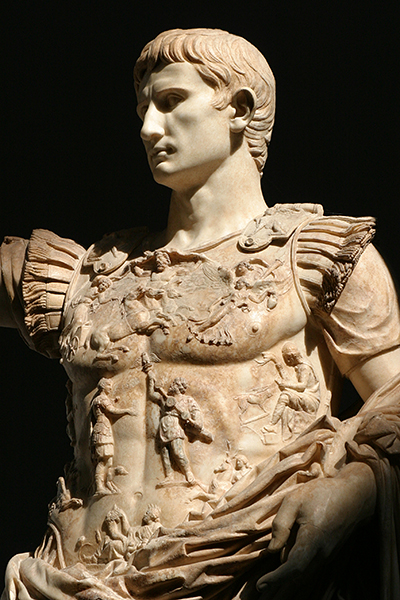
Discovered in the ruins of a villa that belonged to Livia, the second wife of Augustus, and named for the village north of Rome in which it was found, the Augustus of Prima Porta is one of the best known of Roman imperial portraits. The emperor wears a cuirass richly embellished with reliefs depicting the return of the standards lost to the Parthians by Crassus in 53 BC, which Augustus recovered through diplomacy in 20 BC. Around his waist is draped the paludamentum or officer's cloak, which usually was attached at the shoulder.
The statue is beautifully preserved, although the fingers of the right hand have been restored. They now suggest a gesture of ad locutio or address but originally may have grasped a lance. There also has been restoration to the right leg and right arm. Traces of color were discerned when the statue was excavated in 1863 and after a cleaning in 1999. The predominant colors are a bright red from lac dye that colored the cloak. The tunic also was red, highlighted in blue in a milk-based binder. Significantly, the reliefs on the breast plate were picked out in these same colors to emphasize the political message of the statue.
Reference: The Color of Life: Polychromy in Sculpture from Antiquity to the Present (2008) edited by Roberta Panzanelli.